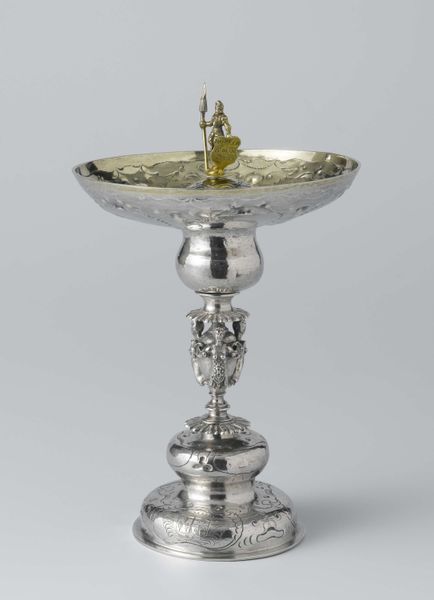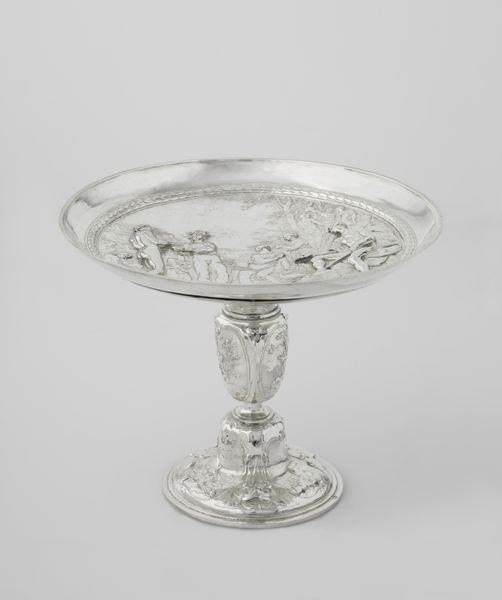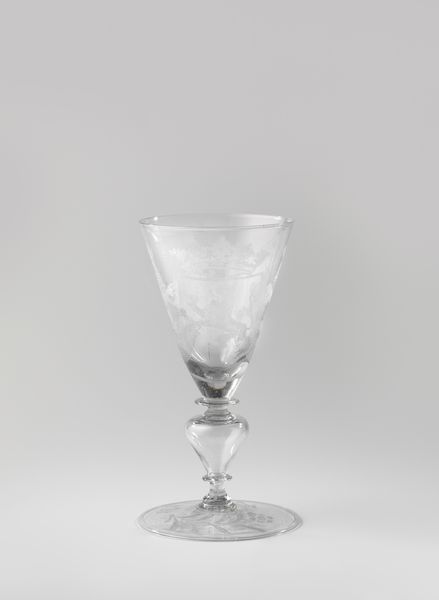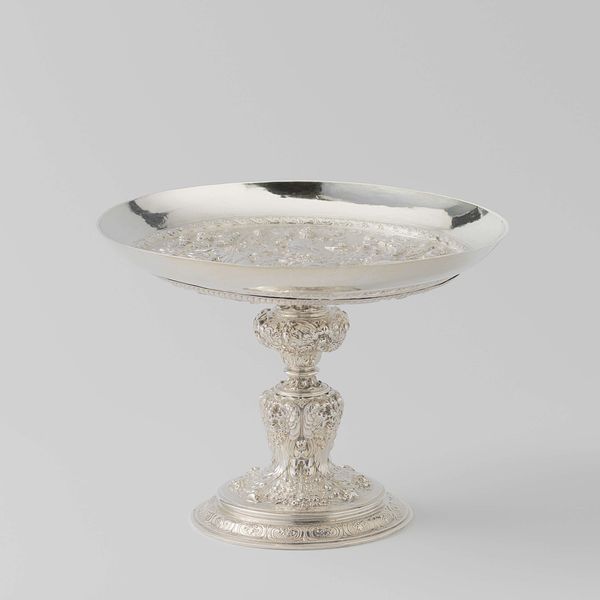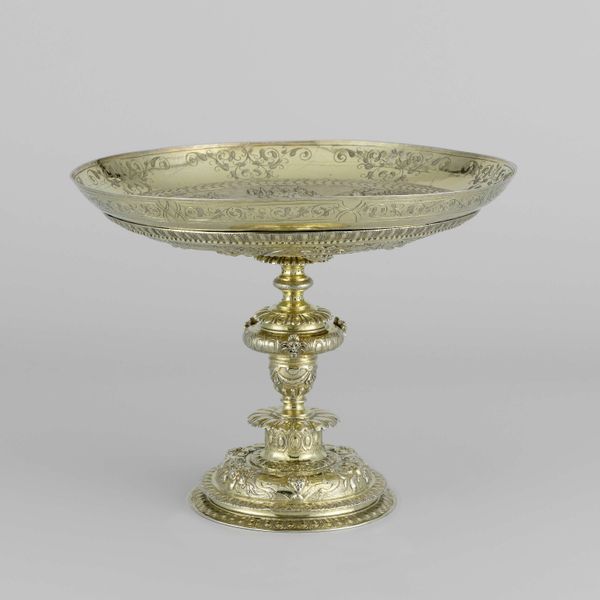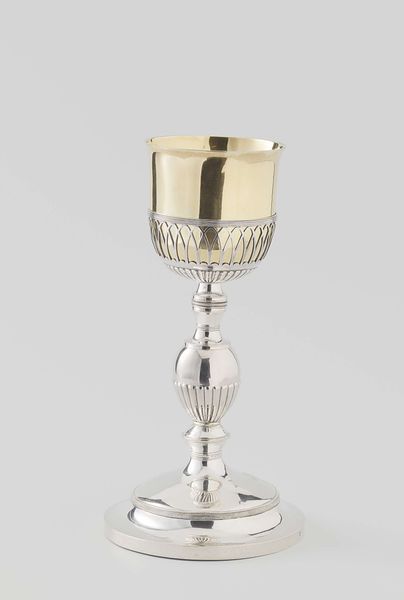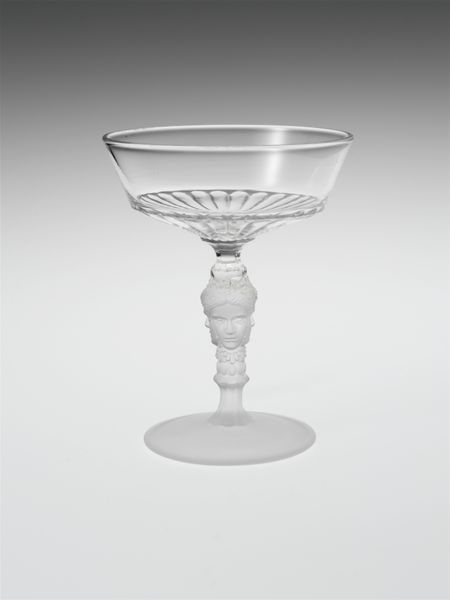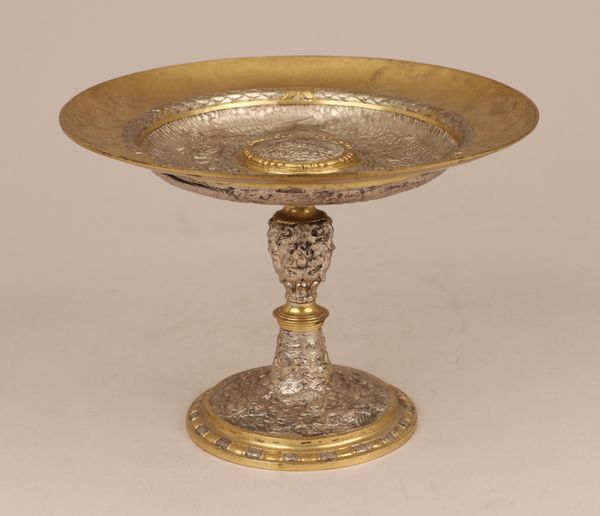
silver, metal, sculpture
#
portrait
#
silver
#
metal
#
11_renaissance
#
sculpture
Dimensions: height 16.5 cm, diameter 16.3 cm
Copyright: Rijks Museum: Open Domain
Curator: What a striking piece! I'm immediately drawn to the almost ethereal quality of this silver drinking cup. The reflection of light across its surface creates such a sense of fluidity. Editor: Indeed. This is a "Drinking cup with a portrait of Emperor Charles V", dating back to 1565-1566. An exquisite example of Renaissance metalwork, its function alone speaks volumes about the elite status of its commissioner and user. Curator: You know, seeing the Emperor's portrait subtly etched within the silver almost transforms this into a relic, a way of ingesting power quite literally. Editor: The level of craftsmanship is impressive, with the goblet’s form showing that perfect harmony achieved when the overall shape complements the material. See how the craftsman balances the bulbous curves of the base with the broad, shallow dish, and elongated stem? Curator: Its purpose as a drinking vessel is so intertwined with the political message. Charles V's image would constantly remind its user—perhaps even Charles' successors—of his legacy and the power they inherited. I imagine it playing a role at state banquets or diplomatic events. Editor: And the formal precision! Observe the elegant balance of concave and convex surfaces that modulate the play of light. Note, too, how its visual symmetry contributes to its serene feeling and solemnity. It seems to demand attention despite its relative simplicity. Curator: I also see its significance beyond courtly settings, this could have been a piece displayed in aristocratic collections. Embodying wealth and prestige, solidifying Charles V's public persona and influence, even after his death. Editor: The silver, a malleable material turned monumental, gives us such a pure impression, and yet this goblet provides valuable insight into the mindset of those involved with the Emperor, or his court. A piece where politics are elegantly embodied. Curator: It leaves me reflecting on the various layers of value—monetary, artistic, political—embedded in what initially seems a straightforward object. Editor: And for me, the lasting impact lies in this artist's success, so beautifully merging usefulness, grace, and visual fascination.
Comments
rijksmuseum about 2 years ago
⋮
Whether an object is ‘religious’ or ‘secular’ in nature depends on its function. In the case of this cup, both apply. It bears a portrait of Holy Roman Emperor Charles V, indicating that it originally was intended as a secular object. However, the inscription records that it served as a communion cup at the first Protestant service held in the Dutch town of Vlissingen in 1572.
Join the conversation
Join millions of artists and users on Artera today and experience the ultimate creative platform.
